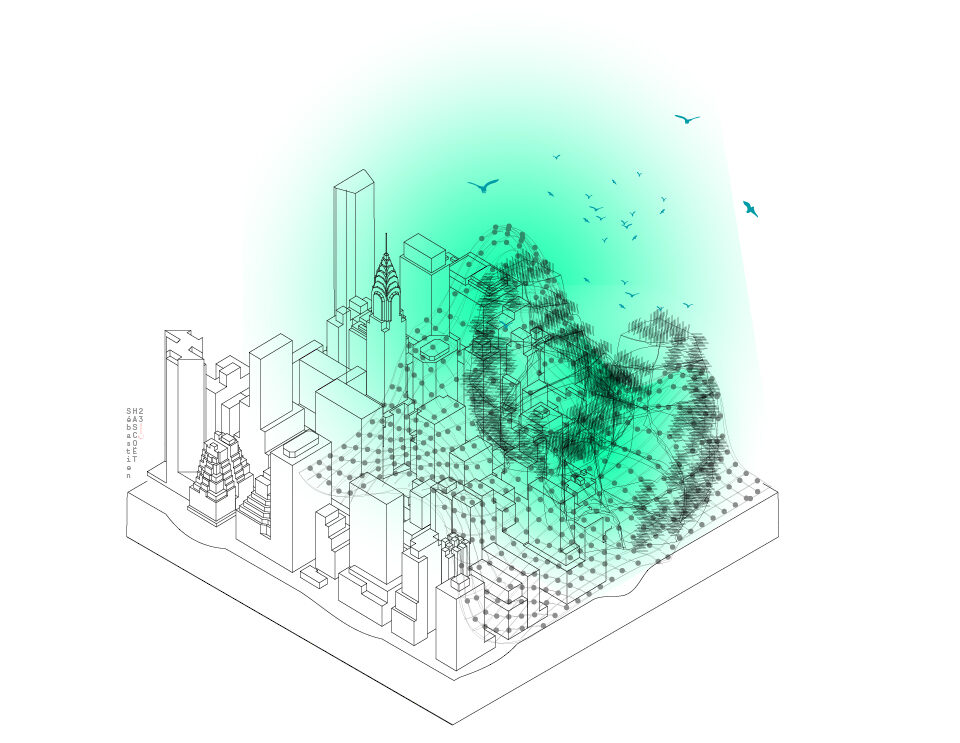Man-Nahāta, Neri Oxman

Long-Term Vision for Rethinking Our Relationship with Nature
Before the Dutch arrived, Manhattan was once a diverse natural landscape of hills, valleys, forests, fields, wetlands, salt marshes, and streams. What is now a human-centered place was once a nature-centric econiche, a habitat for rich wildlife.
Taking the long view of habitat loss and species extinction, OXMAN revisits Manhattan’s landscapes through four hanging models, where a version of the city is depicted every hundred years. In 2100, Emergence is a grid of streets and skyscrapers where an organic shape appears in the form of Central Park. One hundred years later inGrowth, the mass extends outward in concentric forms. InDecay, the edges of the buildings have softened, eroded, like so many melted candles. In 2400, vegetation has taken over the built environment.
Now threatened by rapid climate change, humankind must rethink its relationship with nature in order to survive and thrive.
The impacts on natural cycles caused by planning decisions that aren’t always the best informed should not be considered an inevitability. The only way to absorb them is to recreate the original ecological conditions. This is what Man-Nahata proposes: to restore a healthy ecosystem in the middle of the urban environment, striking a balance between nature and humanity.
Axonometry
Sebastien Hascoët
